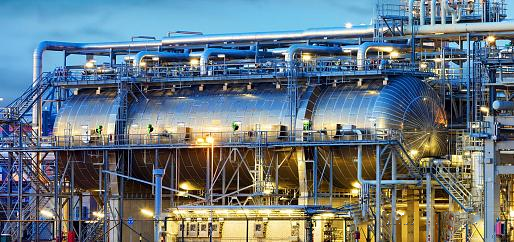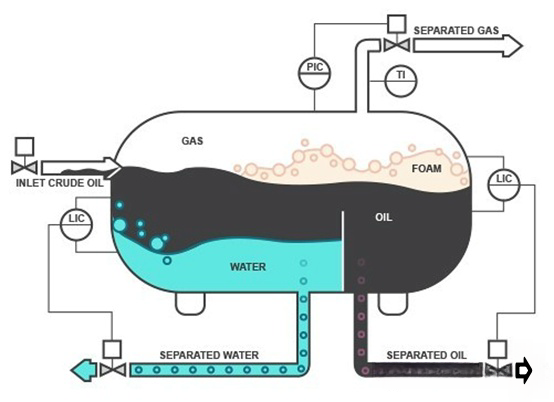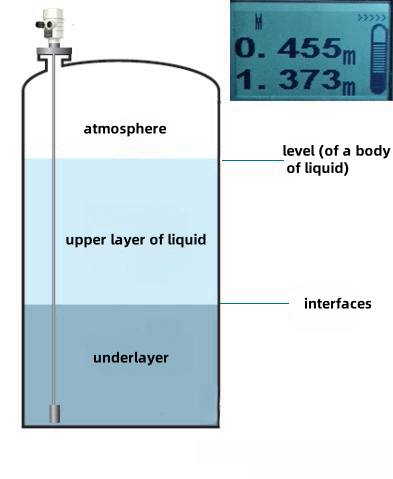BETTER TOUCH BETTER BUSINESS
Contact Sales at KAIDI.
Interface measurement or multi-phase level measurement instruments is often encountered in oil and gas and chemical products. After many years of development, level measurement and material level measurement techniques have made significant progress, but interface measurement is still a difficult problem in the field of industrial process measurement, and there is no superb technology available. However, based on many years of practical experience, process optimisation and extended system uptime can still be achieved in many separator applications by selecting a reliable and suitable measurement technology.

What is an interface?
In the oil, gas and petrochemical industries, reliable interfacial measurement is required whenever immiscible liquids are in the same vessel. Lighter media rise to the top and heavier media sink to the bottom. For example, in oil production, water or steam is used to extract oil from a well. When the well fluid enters the production separator, the hydrocarbons, which are less dense, rise to the top and the water sinks to the bottom, forming an interface.

Interfaces can be formed between liquids and solids, liquids and foams, and liquids and gases. However, in this paper we focus on liquid/liquid interfaces (usually with vapour above the lighter liquid). Two immiscible liquids converge along an interfacial layer and emulsify to some extent. This emulsion layer may form narrow, well-defined boundaries, but it is more common for the emulsion layer to be of some thickness. Typically, the thicker the emulsion layer, the more difficult it is to measure.
While measuring the height of the total level plays an important role in safety and spillage prevention, the height of the interface is critical to product quality and operational efficiency. If the water in the oil is not separated effectively, this can lead to problems in the production process, equipment failure or unplanned downtime. If oil remains in the water, this can lead to direct financial losses and even incur fines for polluting the environment.
Of the current technologies that can measure liquid levels, only a very few can be used to measure interfaces. Current interface measurement technologies include: guided wave radar level meters, magnetostrictive level meters, capacitance level meters and radioactive level meters.
Market research shows that about one-third of users prefer guided wave radar

The most important reason why people like guided wave radar is that guided wave radar can be used to measure not only liquid level but also interface.
One vessel installing one guided wave radar can meet the measurement requirements of liquid level transmitter and interface at the same time, which not only saves economic cost, but also avoids the time and energy spent by engineers who need to deal with two instruments at the same time. Although guided wave radar measurement of the interface can be affected when there is an emulsion layer, this limitation can be mitigated by using an emulsion breaker or by adding a process.
Magnetostrictive technology can also be used to measure interfaces. It is based on the buoyancy principle and therefore has specific disadvantages related to gravity. Also, magnetostrictive level gauges contain moving parts and are prone to adhesion problems, leading to inaccurate measurements.
Capacitance level gauges measure the level of a liquid by the change in capacitance between two electrodes, and capacitance level gauges can also measure interfaces. Measuring the interface requires that one of the liquids must be conductive and the other non-conductive, and there is only one output, liquid level or interface. So when the user wants to measure the level and the interface, it is necessary to install two level meters. Of course capacitance level gauges have the advantage that the emulsion layer does not have any effect on the interface measurement.Guided wave radar level meter can solve the difficult problem of measuring interface in petrochemical industry.
We are here to help you! If you close the chatbox, you will automatically receive a response from us via email. Please be sure to leave your contact details so that we can better assist